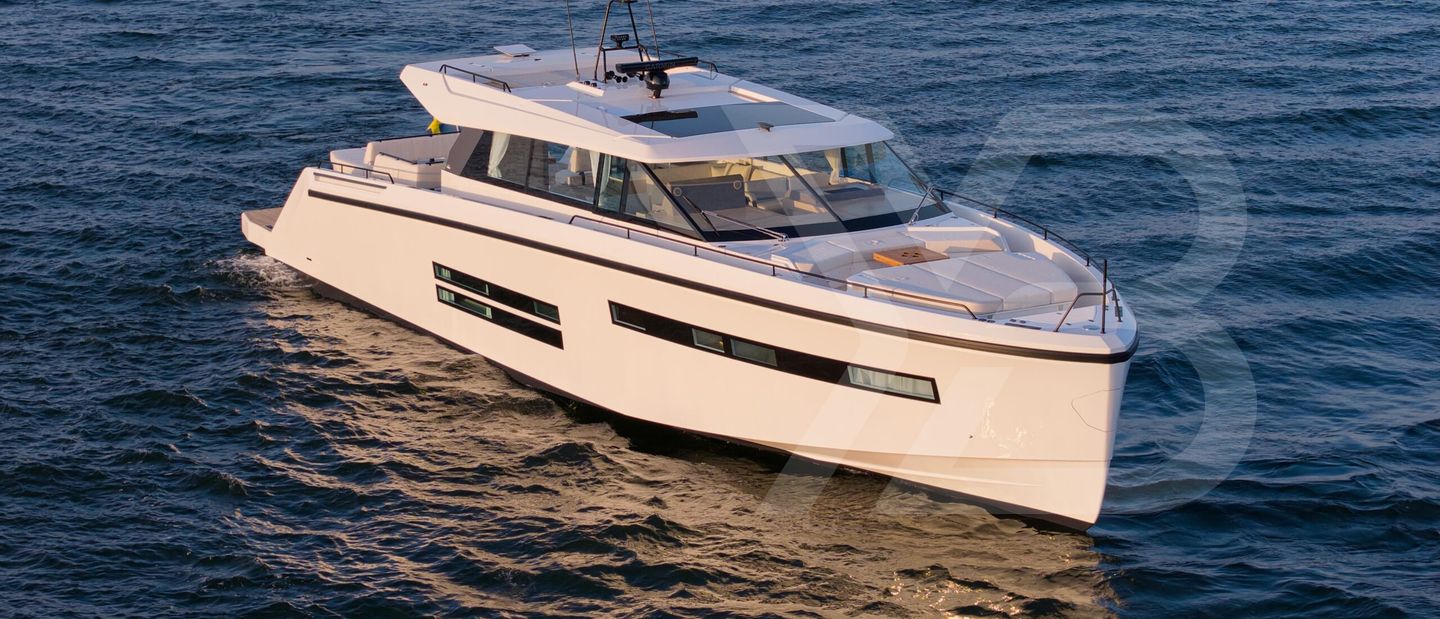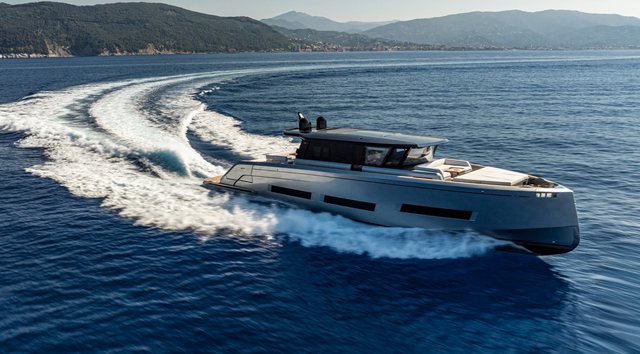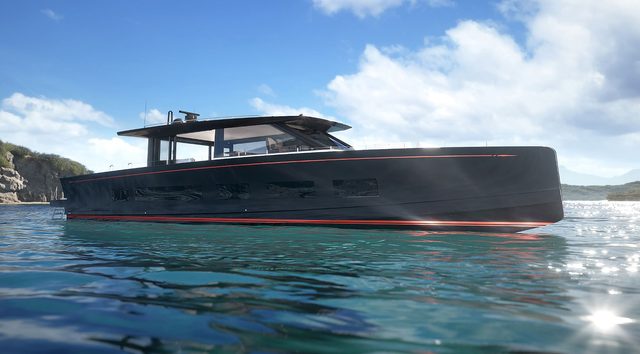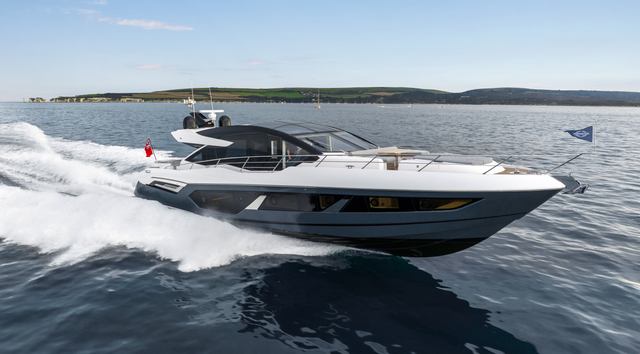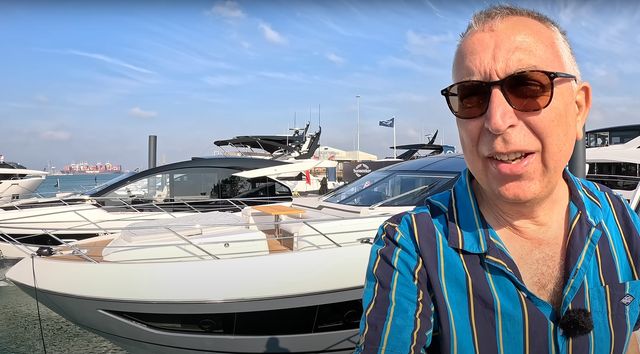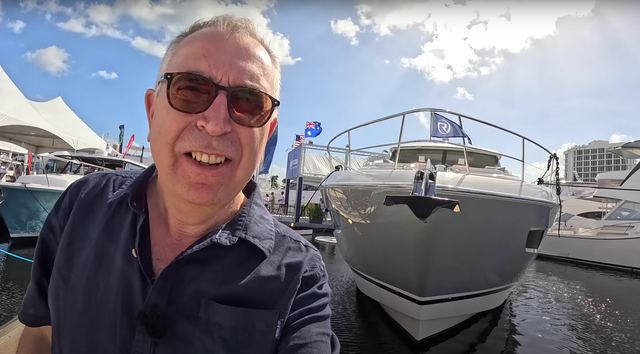The Delta 72 takes a different approach to the 70-foot market. It is built entirely in carbon fibre, shaped around driving dynamics, and designed to be run without a full-time crew. That puts it in unusual territory. It is a coupé in profile, but one with range, scale and proper liveaboard usability.
There are four ensuite guest cabins, including a full-beam owner’s suite amidships and a generous VIP forward. A double and a flexible single to port complete the layout, with a day head off the corridor. Crew accommodation sits aft, just ahead of the engine room. It is a lot of volume for a boat with such a low, coupé-style profile.
Review Video
The Delta 72 was originally commissioned by an existing Delta owner and developed as a line with the Mannerfelt Design Team, whose work across offshore racers and sleek Scandinavian cruisers shaped the hull and profile. The entire structure is carbon composite, vacuum-infused using DIAB foam cores. The hull, deck, bulkheads and the superstructure are laminated as one continuous, lightweight system. Vacuum infusion ensures a clean, accurate resin-to-fibre ratio with less excess weight and greater rigidity.
With twin Volvo Penta IPS 1350s, the 72 is designed to cruise comfortably in the low to mid-thirties and reach just over 40 knots at full throttle. Range at 30 knots is quoted at 500nm, which is great cruising territory for a boat of this size. There’s also the option for an outboard version - the Delta 72 OB - running four Mercury Verado V12s on the transom. That setup trades some efficiency for raw punch, with a top speed nudging beyond 50 knots and a draught more suited to shallow cruising grounds. Fuel burn is higher, but the tanks are larger to match.

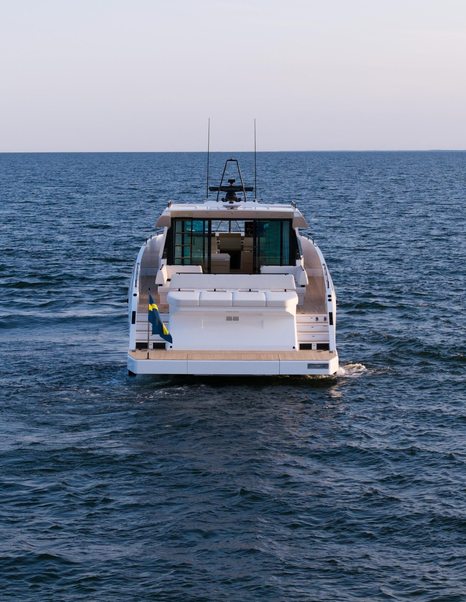
Although we haven’t tested this boat at sea, the hull comes from the Mannerfelt Design Team, whose background in offshore racing has shaped a good deal of the Delta range. The underwater geometry is expected to lift early and hold steady at planing speeds, with minimal drag and a dry, level ride. Previous Deltas have felt composed and settled under way, with predictable steering and a softness through chop that’s rare at this pace. The 72 builds on that same DNA, just on a larger scale
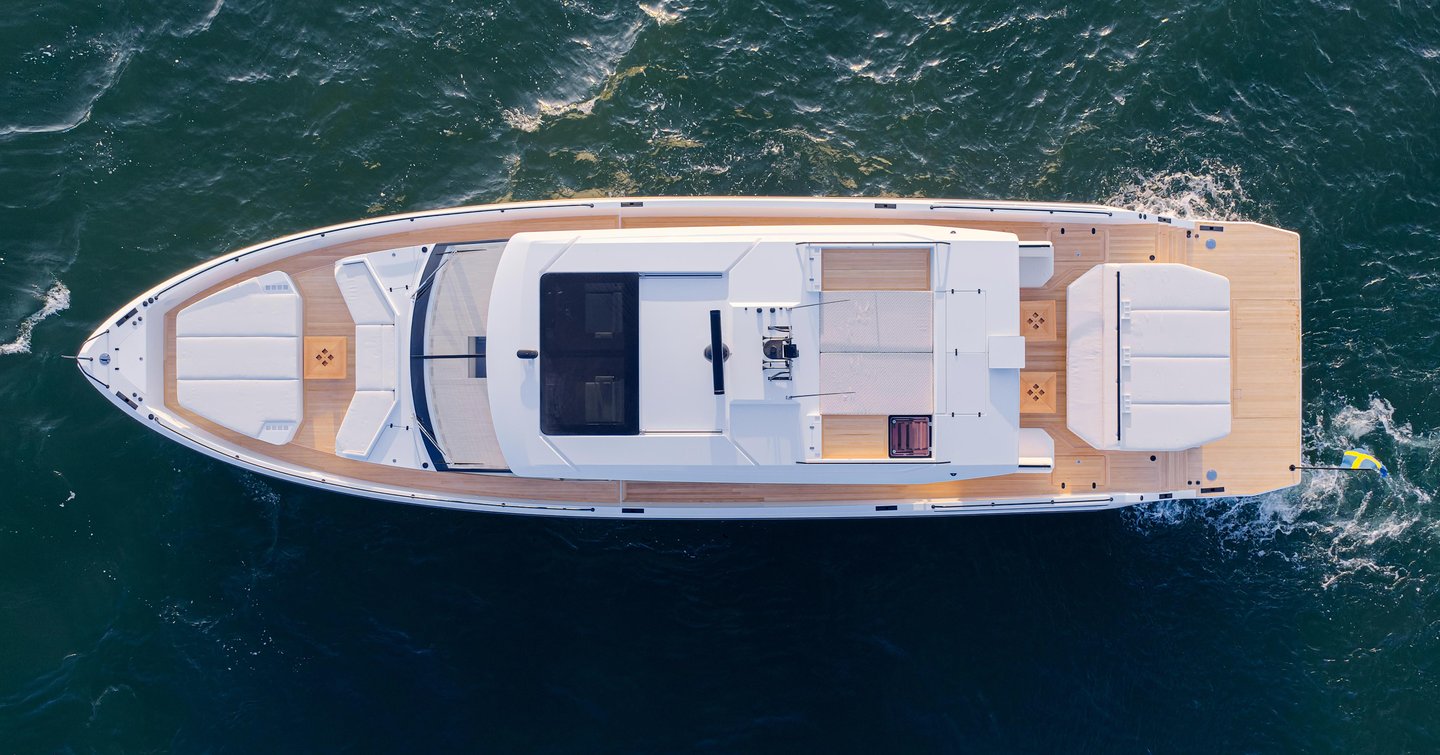
For interior finishes, owners can choose between bleached oak or natural teak, both finished to a satin sheen. Lighting is concealed, lines are clean, and everything from switch panels to serving trays has been carefully considered. The interior avoids embellishment, but warmth comes from the grain of the wood, the softness of the finish, and the quality of the build.
There are limits to what a profile this low can offer, however. Headroom drops around the bed in the master cabin, and engine access is tight once inside. But the shape and weight that cause those constraints also allow this boat to perform as it does and maintain a low centre of gravity.
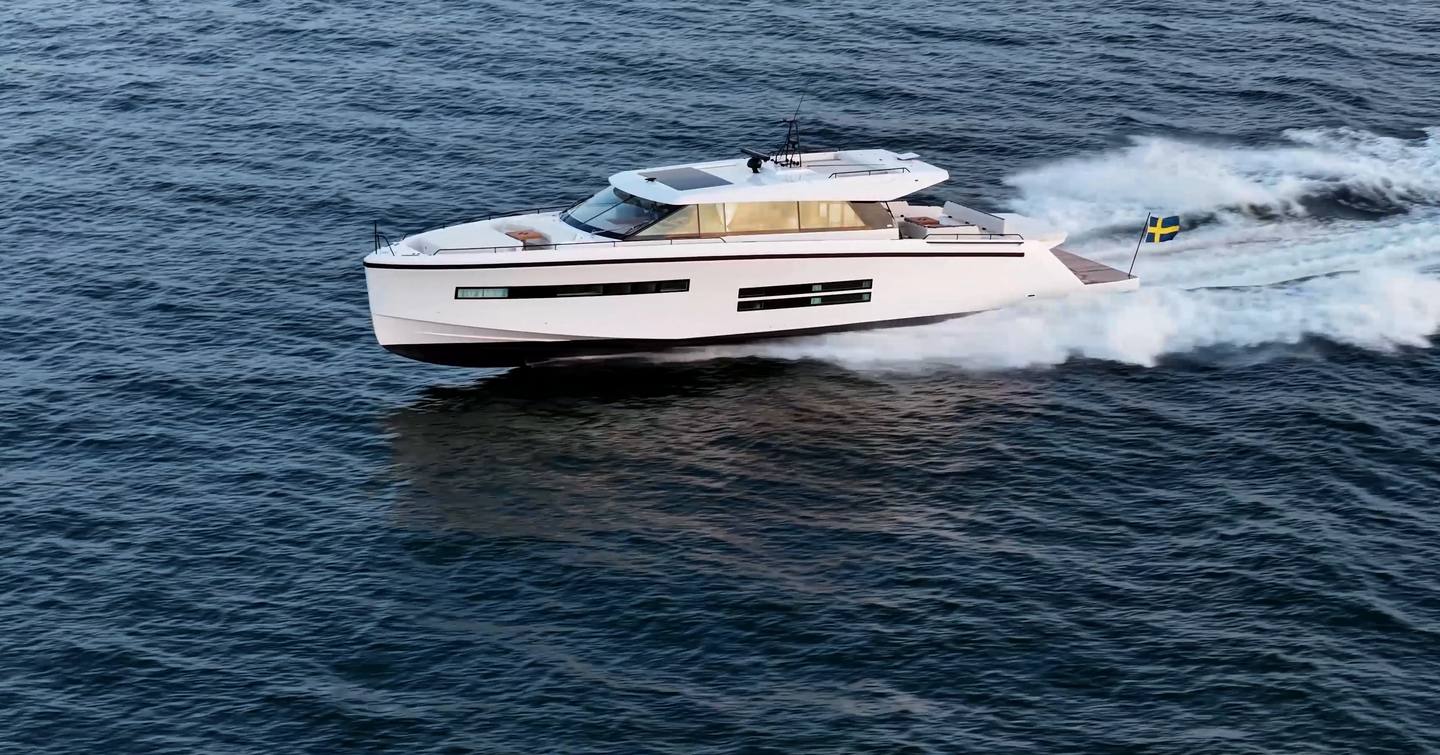
The saloon runs level with the cockpit, separated by a sliding glass door, but the transition is nearly seamless. With the door open and the side glazing dropped, the entire deck looks like one long indoor-outdoor space. It’s one of the reasons the layout feels so open, even without massive square footage.
This boat is finished in pale oak, satin-lacquered, with flat cabinetry and discreet edge details. The palette is light, restrained, maybe even a little too sterile in this spec, though there are darker wood options available. Teak would warm it up, and Delta offers both in the standard fitout.
To port, the saloon seating wraps in a U-shape around a dining table that can open out if needed. The upholstery is firm, but the dimensions work. There’s stowage beneath the cushions, and a pop-up television is behind the opposing settee.
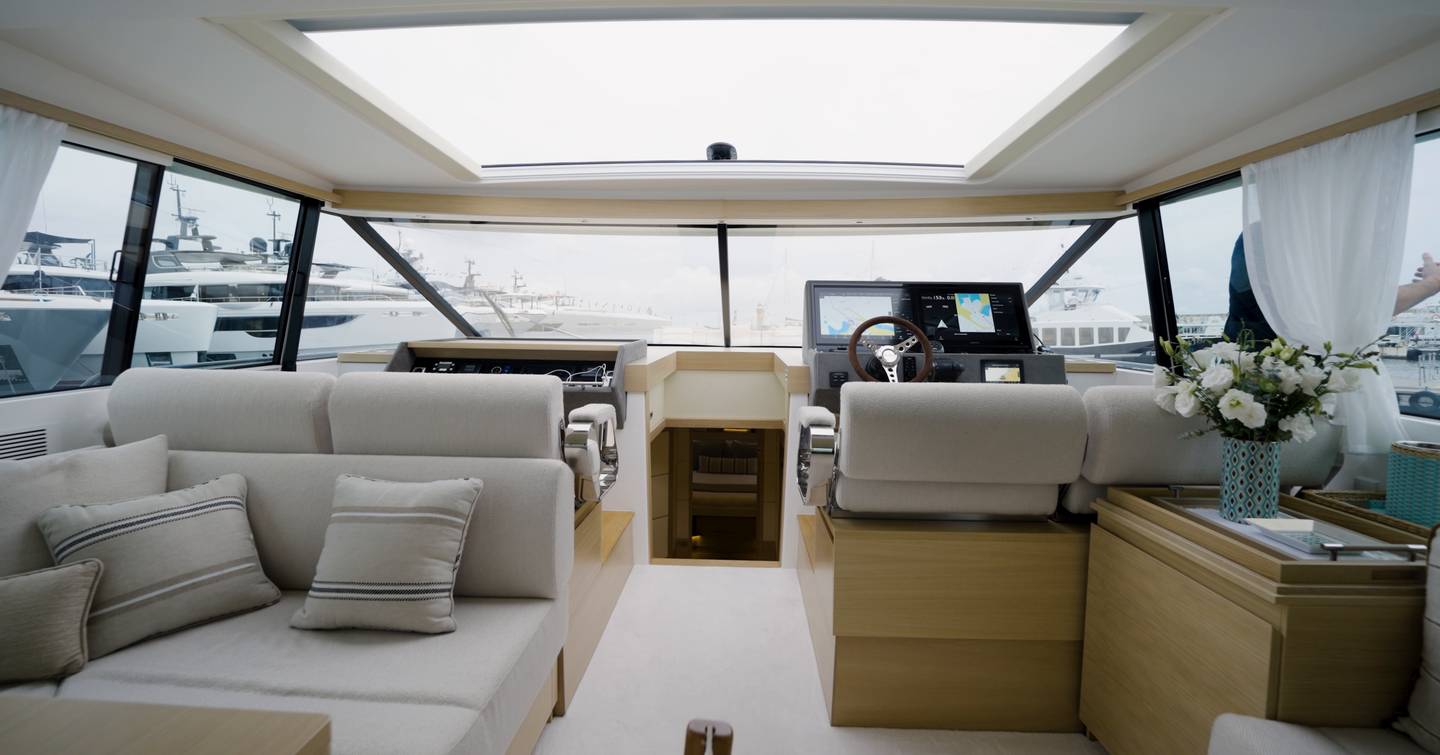

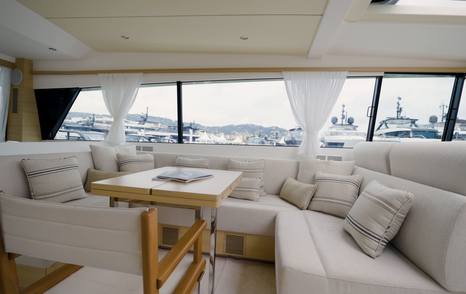
Forward of the seating, the galley is arranged in two parts. Cooking and refrigeration sit on the port side, opposite a preparation and sink area to starboard. It’s a sensible division, and both sides are close to the cockpit, so food and drinks can go either way. The appliances are domestic-sized, including a full-height fridge-freezer, a wine cooler, and a proper dishwasher. You also get a concealed tray for tea or coffee service that lifts out and moves easily between saloon and cockpit.
There are downlights in the headliner, indirect strips along the cabinetry, and natural light from the saloon windows, which run long and low into the coaming, but there are no walls of glass. The profile is low, but you still get a steady wash of daylight.
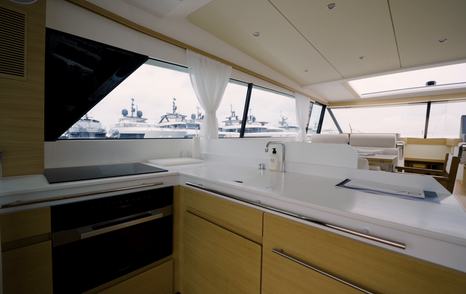
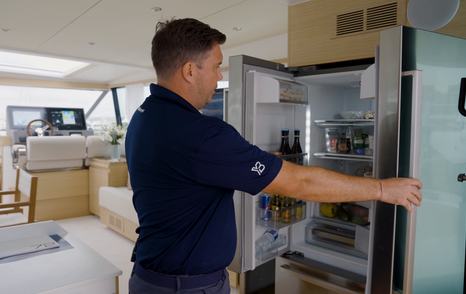
The helm station is classy and intuitive. The wheel is typical Delta: slim, Alcantara-wrapped, and shaped more like something from a sports car than a boat. It feels good the moment you sit down.
There’s not much in the way of switchgear as most of it’s handled through SeaZone digital switching and MFDs, so you end up with a tidy layout that doesn’t feel cluttered. There’s also a secondary panel on the port side (SeaZone again), plus stereo control and stabiliser toggles. That side has a raised navigator’s seat with a great view forward, and a stainless rail you can hold onto if you’re underway. It feels like a working space, not just a jump seat and given this boat's fast cruising potential, it's great that four people can sit looking forward underway.
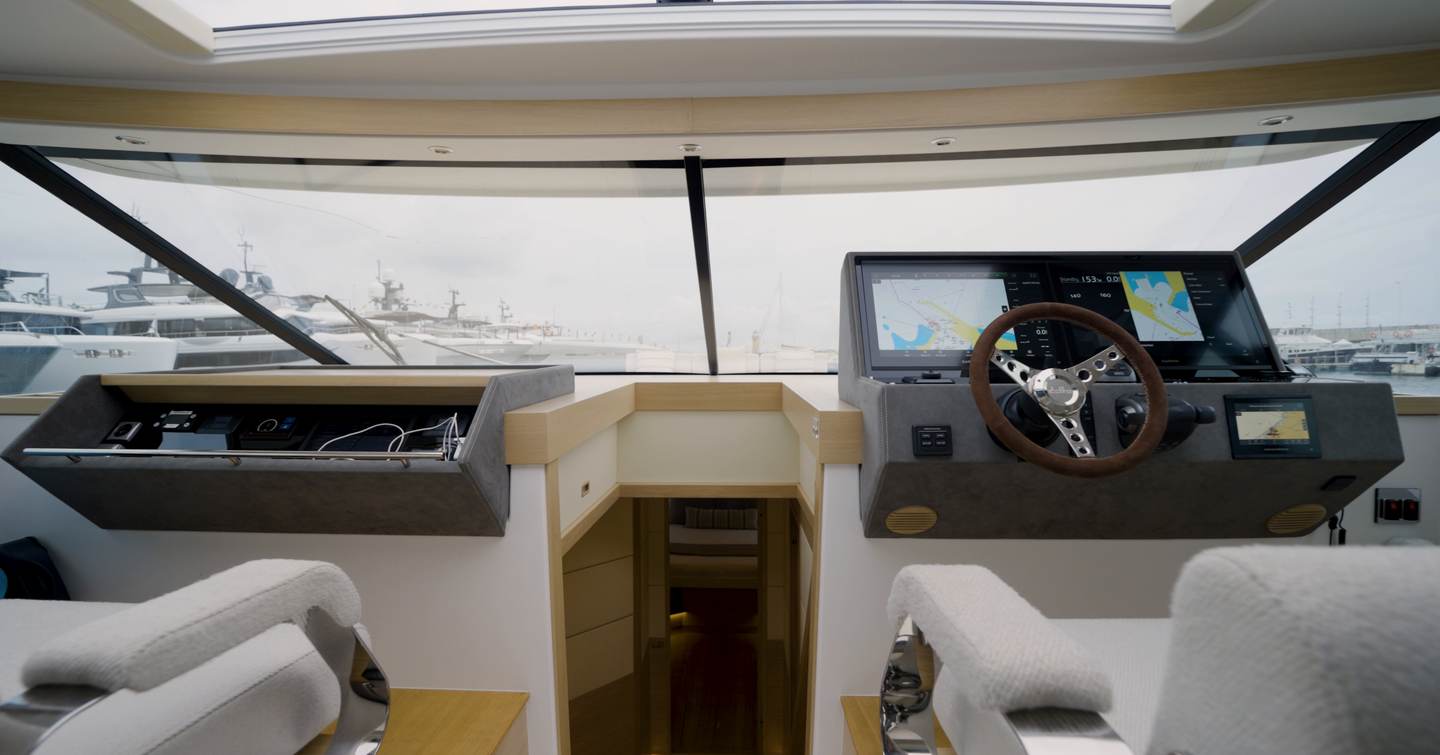
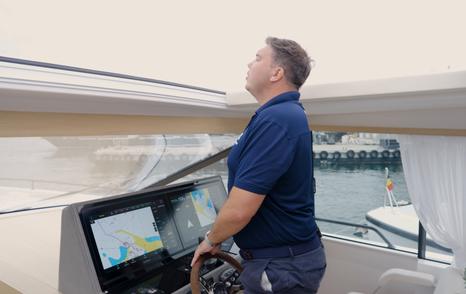

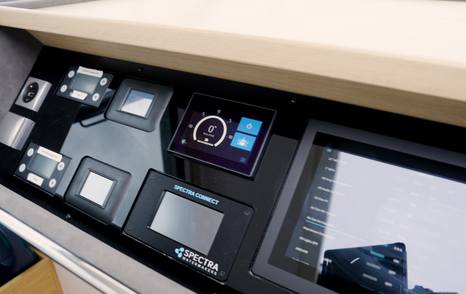
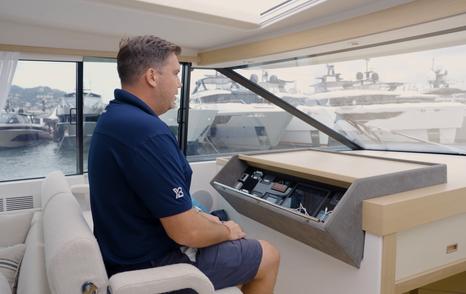
The helm seats themselves are fixed and low-backed, though each has a flip-up bolster if you want to perch higher. There’s enough room to stand and peek over the screen, just, but this is more of a sit-down driving position. The wheel adjusts manually, which works fine once you’re set.
There are side doors to port and starboard, both sliding. Handy when you’re docking, but they also help open the space up, especially in combination with the sunroof above. That brings in more light and air than you might expect in a coupé, and gives a bit of that open-boat feel at speed.
Owner's Cabin
Aft, under the saloon, the owner’s cabin stretches the full beam. It is the most private space on board and easily the most detailed. The atmosphere changes slightly down here. It is quieter, more cosy, and clearly intended to feel separate from the rest of the boat.
The bed is set low and central, with a deep frame and a wide headboard. It looks and feels generous. You do have to duck slightly on the way in. Ceiling height drops as the roofline flattens, and around the foot of the bed, it gets tight. But that is the trade for the low profile above. Once you are in bed, it does not matter.
There is stowage on both sides, including full-height wardrobes and drawer space along the port bulkhead. A sofa runs along the starboard side, softening the edge of the room and giving it a more lived-in feel. A built-in bureau sits to port, with space for a laptop or dressing area, and a small fridge hidden underneath. That is a nice detail. Morning coffee without going upstairs.



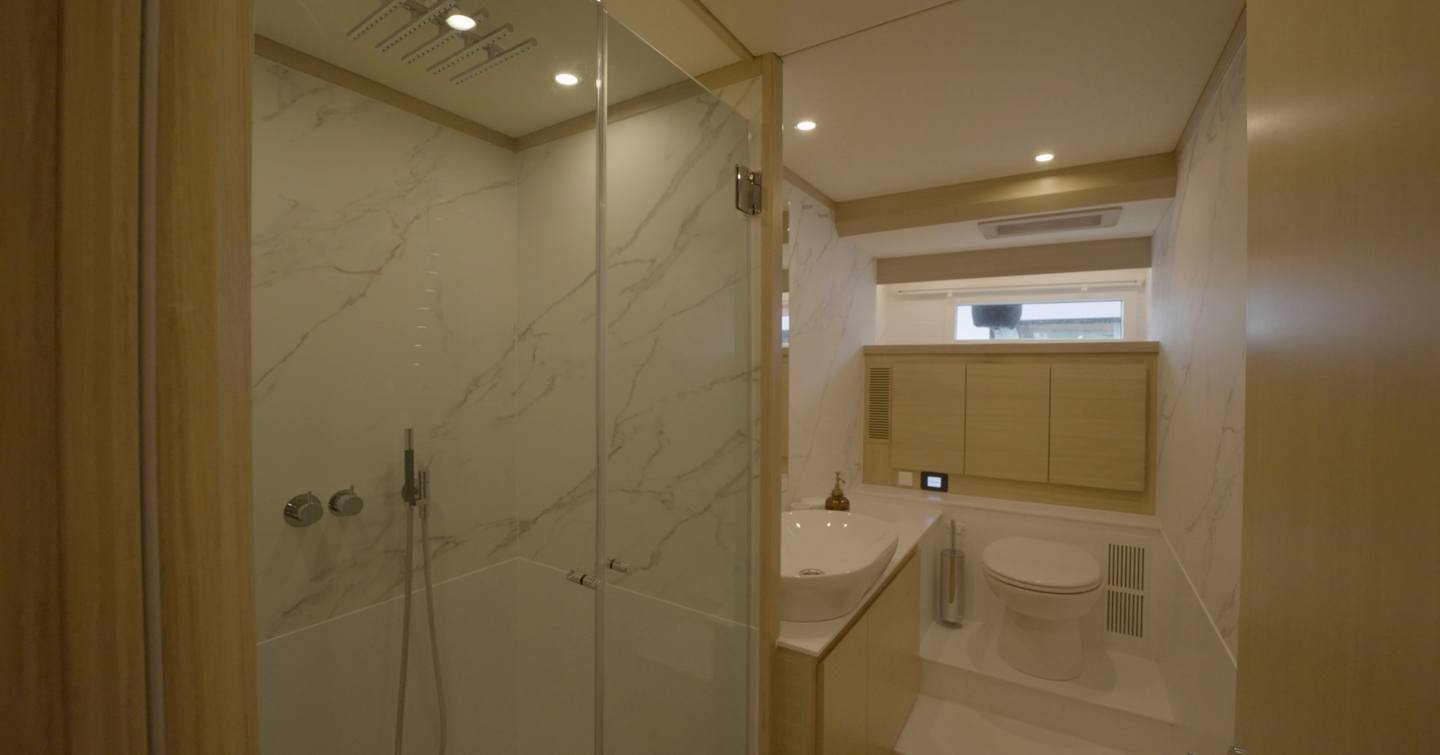
Guest Accommodation
Moving below, the scale of the lower deck is the first surprise. For a boat with such a low and sleek profile, there is more volume here than expected.
The forward VIP cabin feels particularly generous. Floor space is wide open, which makes it easy to move around, and there is enough room to stand and dress without feeling boxed in. Ceiling height holds up well, too, with natural light coming through the hull windows and opening ports. Stowage is built in on both sides, with a mix of drawers and hanging lockers, and a television is fixed to the forward bulkhead.
The bed is set centrally with walk-around access on both sides. Finishes follow the same language as the saloon: flat oak joinery, soft lighting, and a light, quiet palette. The ensuite bathroom is nicely fitted, with a separate shower cubicle and enough stowage to be practical. It feels like a cabin you could stay in for more than a weekend, which is not always the case in this size bracket.
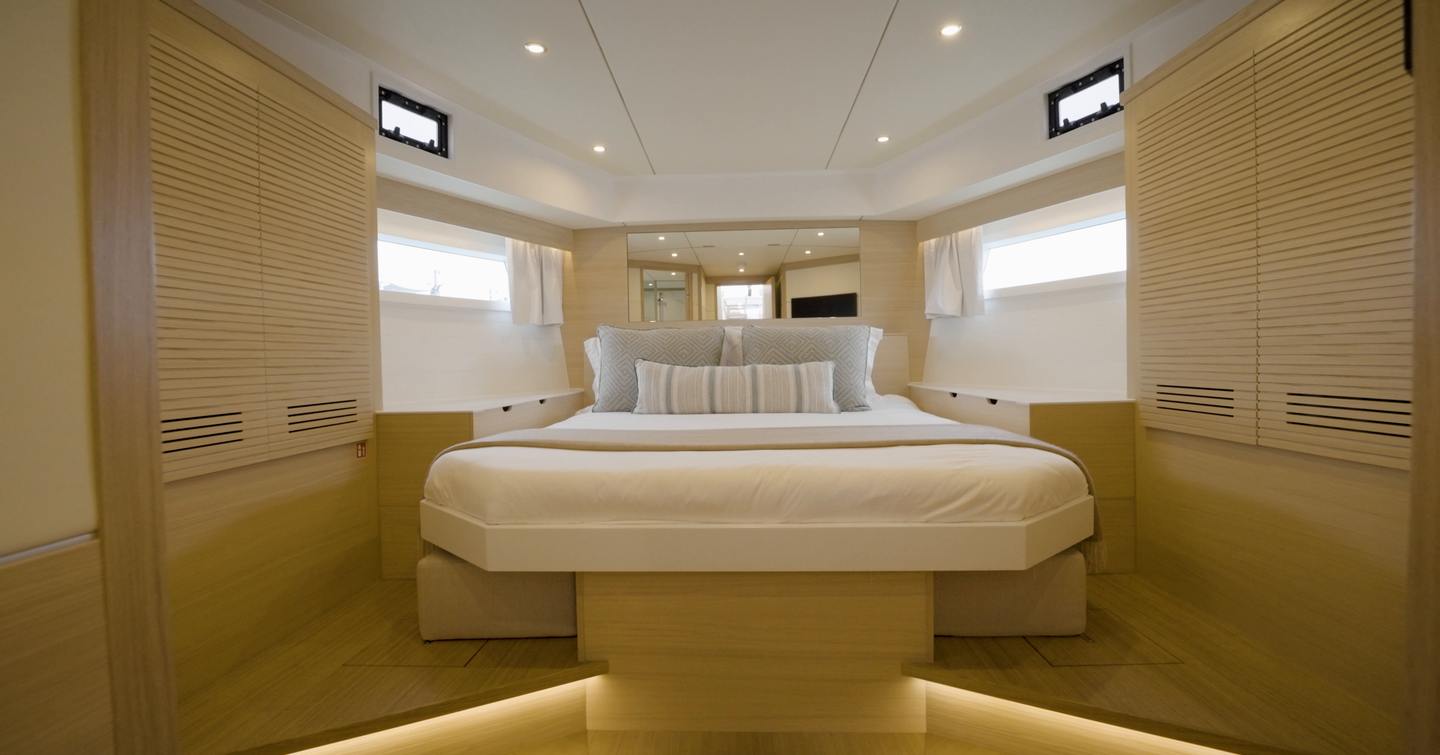
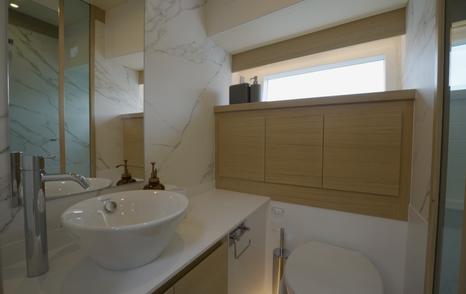

Just aft on the starboard side, there is another double cabin. The bed runs across the beam and fills most of the space, which limits movement slightly, but there is still room for storage, opening windows, and a good-sized bathroom. The ensuite here also includes a separate shower, and the outboard side of the cabin gets natural light through a hull window and port.
The bed is not enormous, and the person sleeping against the hull will need to climb over their cabin-mate to get out. But the stowage is generous, the finish is on par with the rest of the accommodation, and the layout makes the best of the space available.

Opposite the lower stairwell, just before you reach the owner’s suite, is a smaller guest cabin. It is set up here with a single berth but the layout is flexible. This space can be arranged for crew with bunks, or as a study, or even left open with a desk or storage depending on how the boat is going to be used. Delta does not offer major layout changes elsewhere but here they give you some freedom to personalise.
The berth itself is tucked to the outboard side with stowage below and shelving above. A small hull window brings in some natural light and helps the space feel less enclosed. As with the rest of the lower deck, the finish is consistent.
There is a door leading to its own ensuite bathroom. This also doubles as the day head, positioned right at the bottom of the stairs where guests can reach it without passing through any of the sleeping areas. It has a toilet and a separate shower compartment, both finished simply but neatly.

Crew Accommodation
Behind the engine room, accessed via the central cockpit hatch, is a compact crew space. It includes two bunks, a small bathroom, and just enough room to change or stow gear. It is not large, and Delta is upfront about that. This boat is designed for owner operation first, and most owners are expected to use this area as overflow storage rather than live-in crew accommodation.
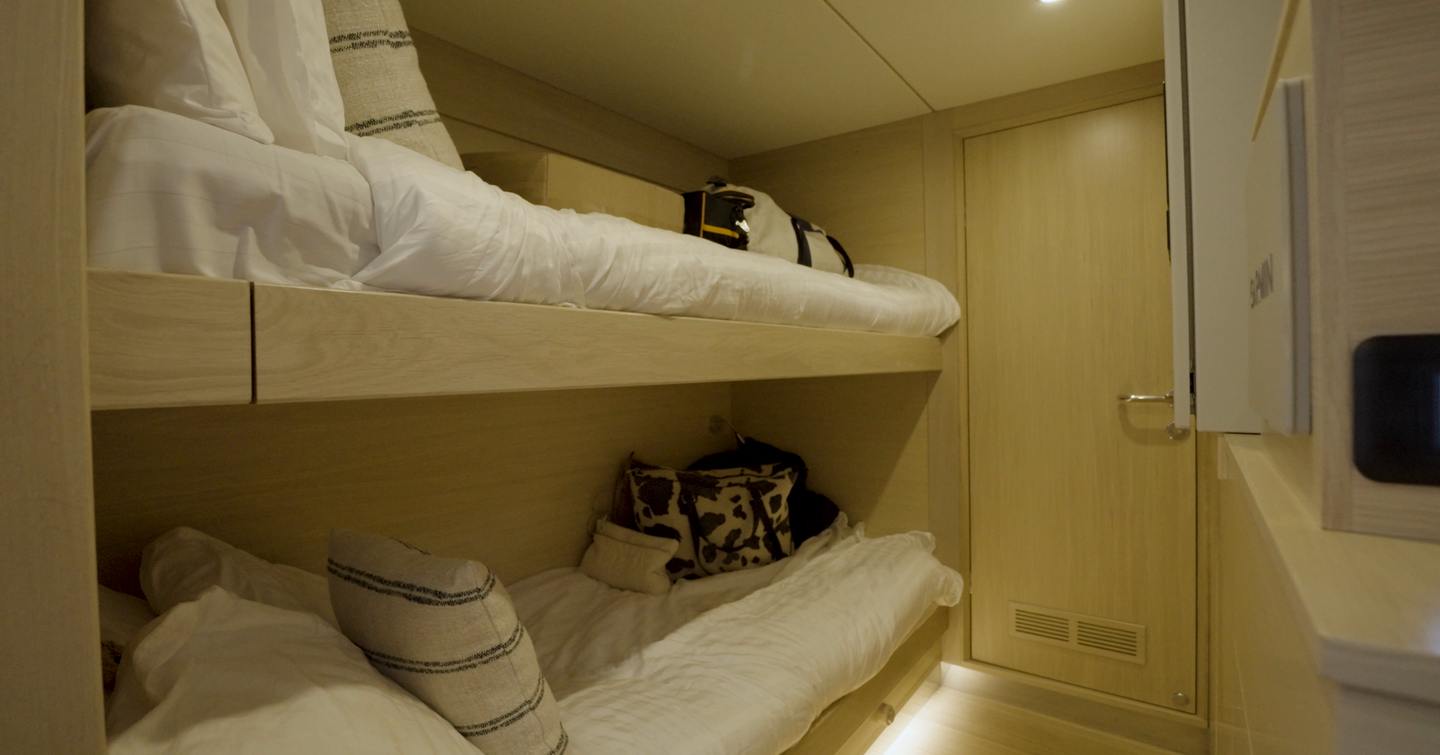
The bathing platform is wide and low down, with clean edges and a deliberate absence of clutter. This particular boat is fitted with the Opacmare Transformer system, allowing the entire platform to drop into the water, raise to meet the quayside or hover at mid-height for boarding. The movement is fluid and silent, and it gives you options without intruding on the design.
Underneath the cockpit sunpad, the tender garage holds a Williams SportJet 345 with enough space remaining for smaller items or water gear. The entrance is wide, access is clean and the whole unit tucks away behind a flush hatch when closed.
All hardware back here is kept minimal and matched. The cleats are pop-up and finished in black, as are the rails. Twin winches sit low in the deck, ready for lines. A deck shower point is built in, too, close to where you'd come back aboard after a swim. There's also engine room access via a hatch just forward of the garage bulkhead, one of three entry points to the machinery space.
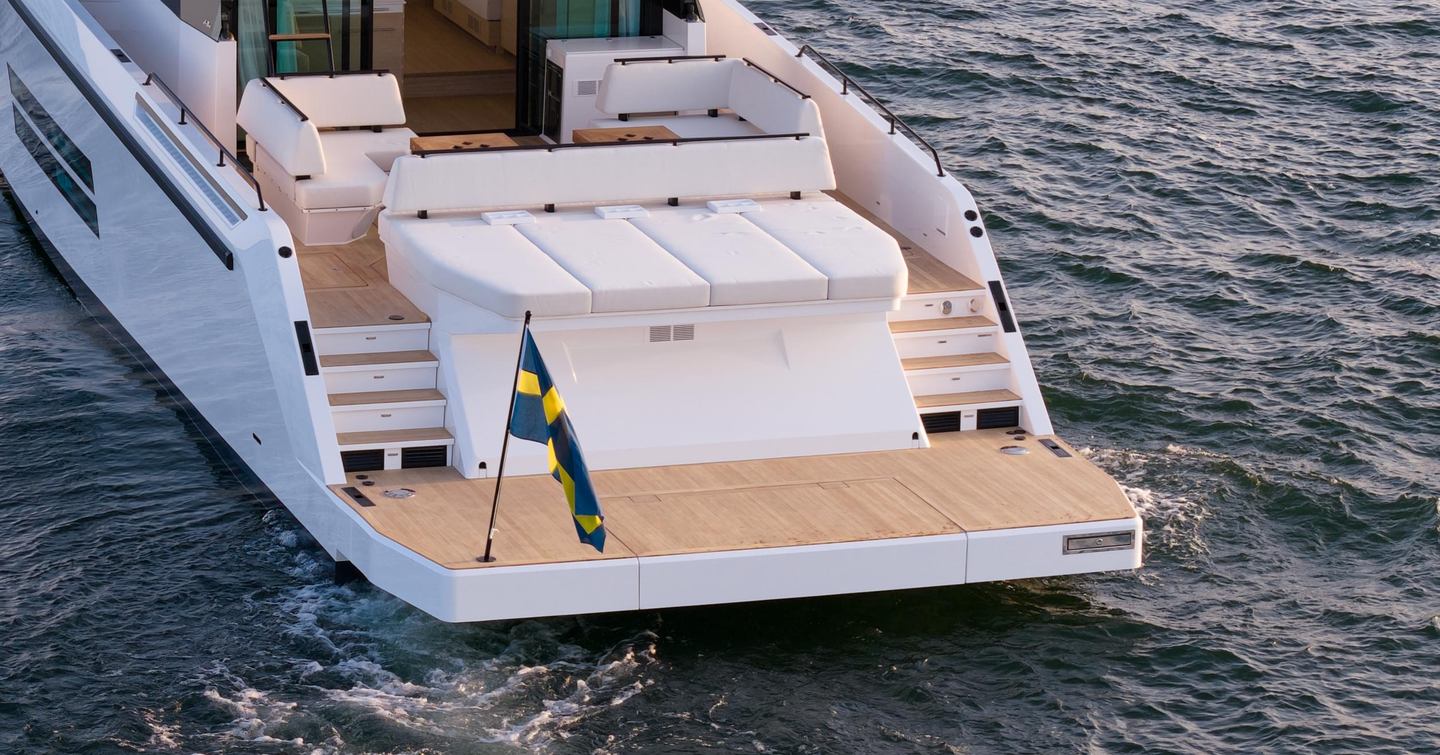
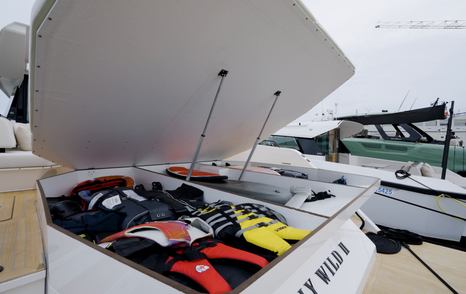
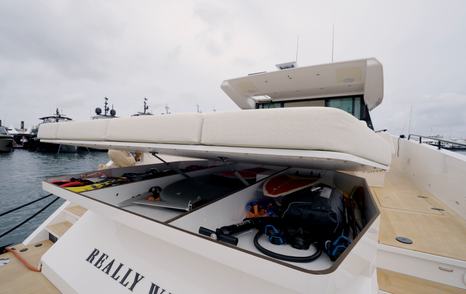
Cockpit
The cockpit is more flexible than it first appears. It has a clean run of seating, two tables, and the big sunpad stretching aft. But the tables are independent, spaced to give separation when needed, but each can open and expand until they meet in the middle, forming a larger dining arrangement.
One detail worth noting is the weighted trays, which slot into the sunpad recesses and can slide side to side along the cushion line. You can rest a drink or a phone beside you no matter where you’re lying, and they can be lifted out and brought forward if you want to serve elsewhere.
The bar is positioned to port, close to both tables. There’s a grill, sink, and fridge arranged along the inside edge of the galley, so food and drink can be served to the cockpit without needing a crew member or a long walk. Overhead, the canopy system is deliberately manual. There’s no electric mechanism to deploy it - just carbon fibre poles and fabric, fitted by hand. It's in line with Delta’s wider approach to weight saving and simplicity.
There’s joystick control on both sides of the cockpit too, a detail that shows how seriously Delta takes self-operation. Being able to stand to port or starboard and watch the side of the boat makes handling much easier.
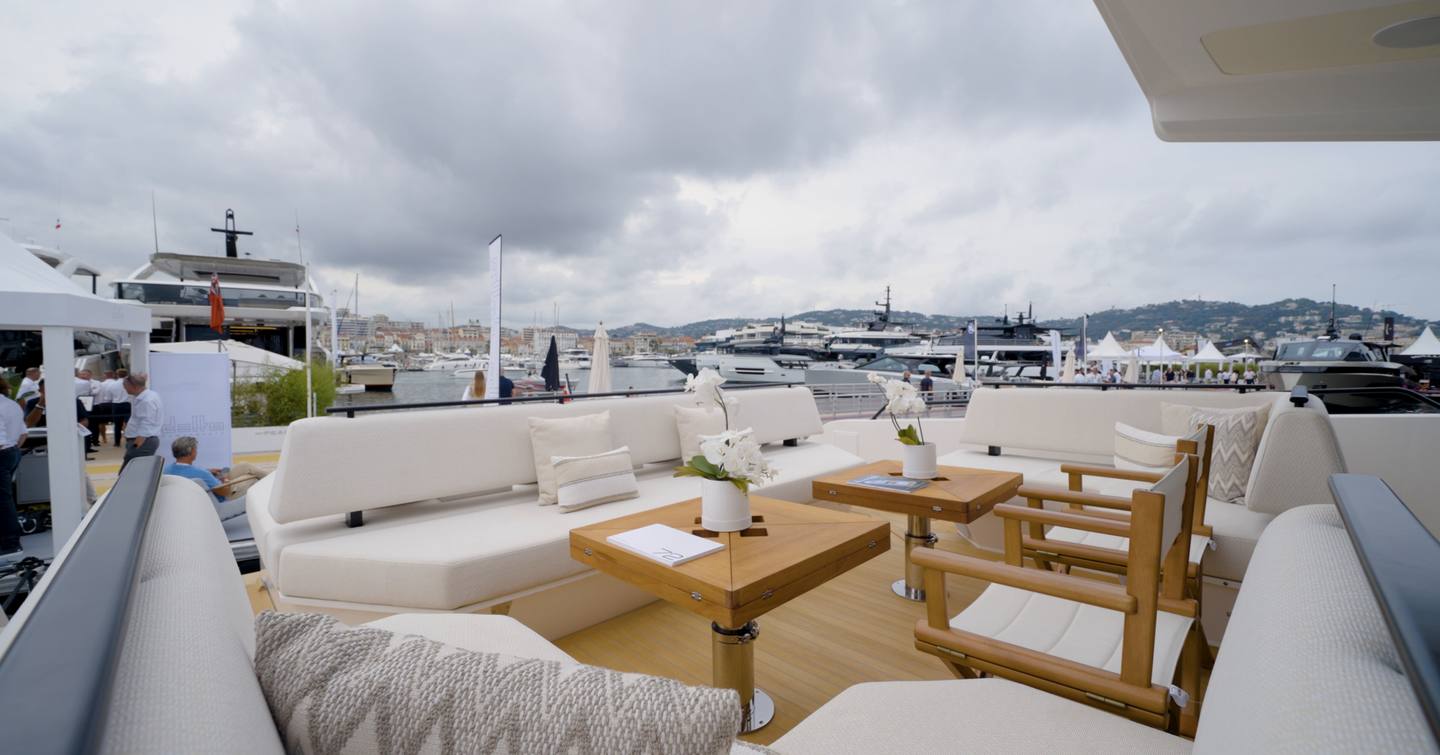

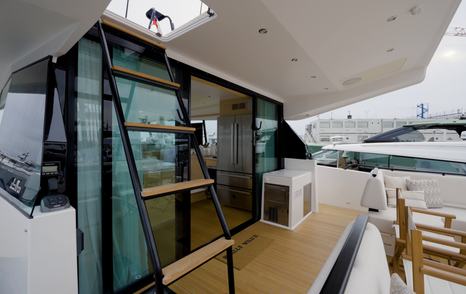
Sun Deck
The Delta 72 looks like a strict coupé, being low profile and having no flybridge. But they’ve carved out just enough space on top to make it useful. A slim sunpad sits on the roof, reached by a narrow ladder leading up from the cockpit. The ladder is integrated into the design, tucked against the rear pillar, easy to grab, and angled just enough to climb without feeling like you’re scaling the radar arch.
The pad sits centrally, behind the sunroof mechanism, and gives you a spot to lie flat, face aft and catch the breeze. It’s not a social zone like the bow or cockpit, but it does offer privacy and a high view over the anchorage.
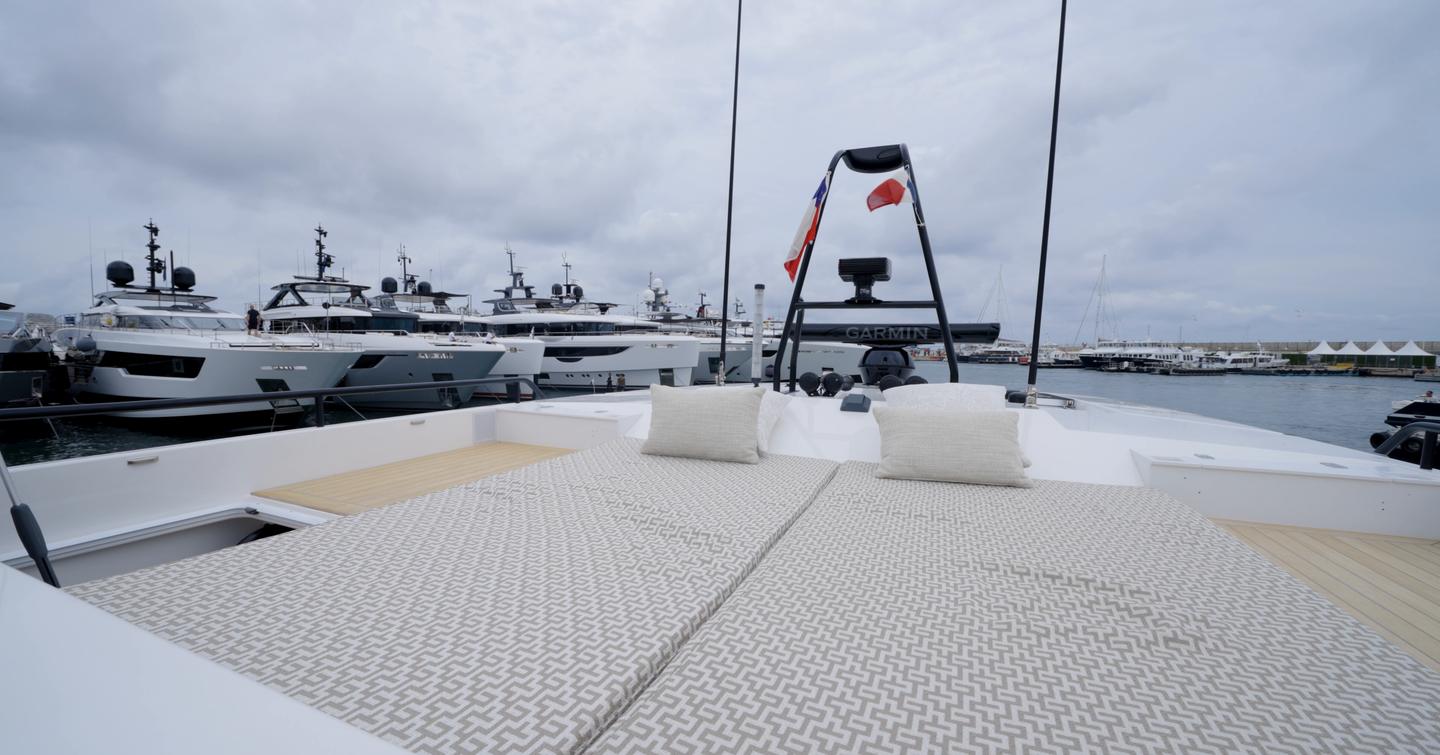
Side Decks & Foredeck
The side decks are easy to reach and surprisingly generous. Protection starts early, with the cockpit coaming leading into a full-height bulwark and a solid grabrail inside the superstructure. As you move forward, the rail continues and gives the sense that someone has thought about how the boat is actually going to be used, especially if you’re handling lines or crewing short-handed.
Overhead clearance tightens a fair bit as you pass beneath the hardtop, particularly if you’re tall, but the footing does stay level, and there’s space to carry fenders forward if needed. There’s also somewhere to put them, in low lockers that are built into both side decks, big enough to hold lines, covers, and fenders right where you need them. The lockers don’t run across to each other, so stored gear won’t shift underway. It's one of those things that’s easy to miss, but very welcome when you're trying to tidy up the decks without traipsing back inside.

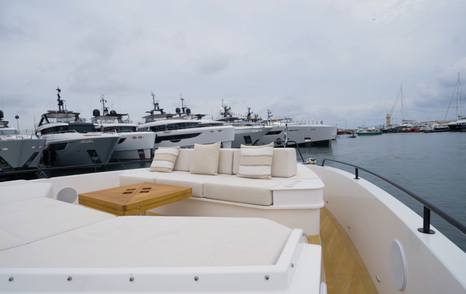

Up at the bow, you can see just how sleek this machine is. The windscreen line sits low, giving the whole front end a poised, almost automotive stance. It feels fast even standing still.
The foredeck becomes another sociable space. Cushioned benches face aft, tucked behind the coaming, and a flexible table opens out for drinks or lunch. The configuration works well at lower speeds. At displacement pace or anchor, it’s quiet, open and breezy. Cushions are removable, and the seat modules can be shuffled slightly to convert the area into a sunpad. There’s also provision for a canopy here, using the same carbon pole and fabric system as the cockpit.
Forward of the seating, the anchoring gear remains invisible until needed. A flush panel hinges forward to reveal the anchor arm, which extends hydraulically and stays hidden the rest of the time. You also get a pop-up cleat and a winch for Med-style mooring.
Access to the engine room starts in the cockpit. There are three separate points: two hatches down by the aft corners and a central one just forward of the tender garage. That one also leads through the crew space. It is a practical layout. You can get in from either side or walk straight through the centreline if you are heading aft.
The space itself is very tight. You notice it as soon as you’re in, as the floor is low, and the moulding from the tender garage intrudes, which makes crouching pretty much the only option. You can carry out daily checks, reach filters and valves, but anything more involved is going to be a squeeze. There is just enough room to get around the outboard sides of the engines, but you have to work for it.
The fit-out is clean. Cable runs and piping are clipped neatly, and the structural elements feel solid. There is a Seakeeper gyro back here, as well as the generator and all the usual technical systems. It just happens to be in a hull that prioritises performance and profile over standing headroom.
The engine room tells the same story as the rest of the boat. Built properly, laid out with care, but always within the limits of that low, streamlined hull. You are not going to stroll through it in a cap and a clipboard. But it does what it needs to.
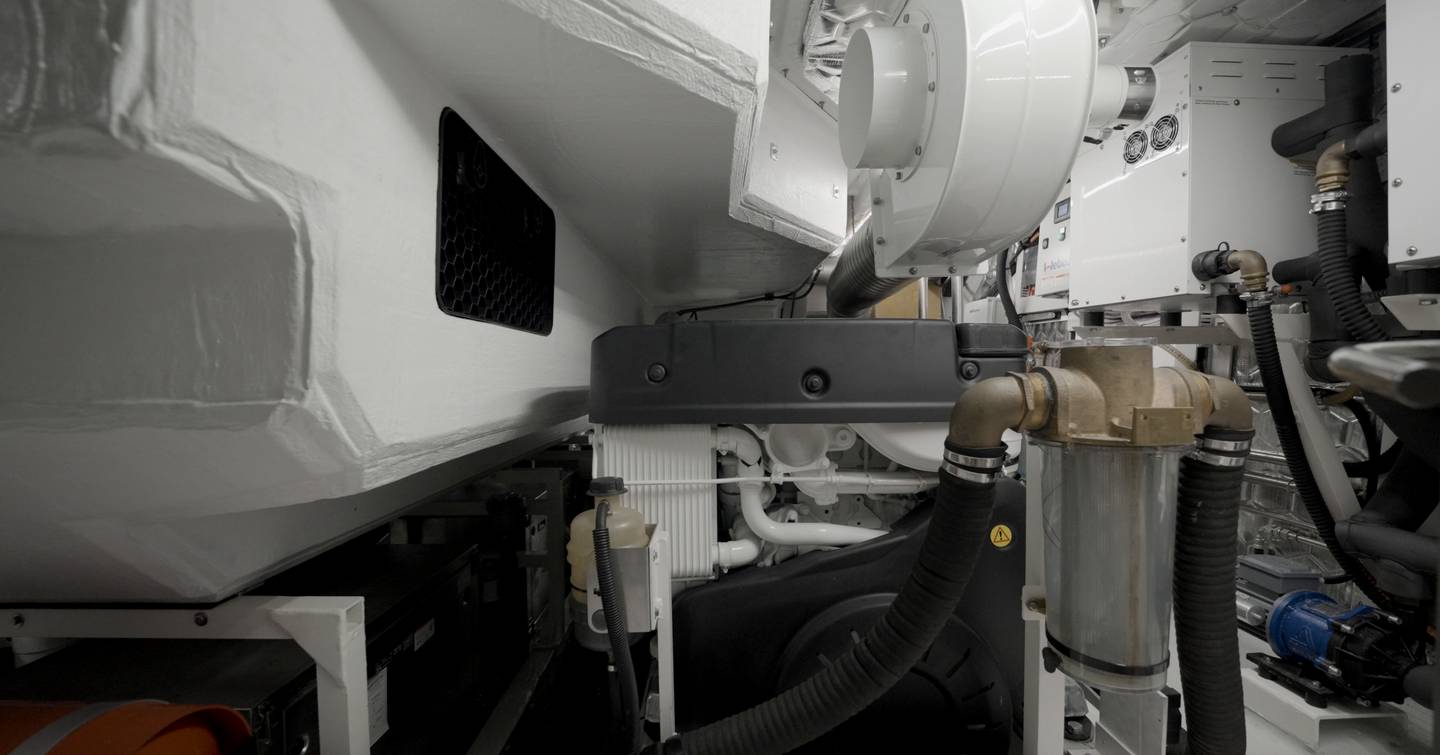
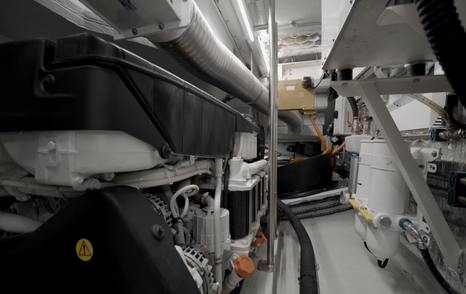

The base price of the Delta 72 varies depending on engine choice, as detailed below:
- Twin Volvo Penta D13-IPS900 (800hp): €3,750,000 (all prices ex VAT)
- Twin Volvo Penta D13-IPS1050 (900hp): €3,800,000
- Twin Volvo Penta D13-IPS1350 (1,000hp): €3,900,000
The boat we saw had twin Volvo Penta D13-IPS1350 and came in at around €4,500,000. That is what you'll pay for a boat with a pretty complete spec with a stabiliser, the largest engines, a hydraulic bathing platform, air-conditioning and a full suite of electronics.
It's not a cheap boat, but it's a carbon fibre flying machine that is designed to travel fast and far and there aren't many 75-footers as good at that as this thing.
Our Verdict
The Delta 72 doesn’t try to do everything. It sticks to what Delta does best - lightweight build, sharp design, and a hull that’s meant to be driven. That focus does come with compromises. Headroom in the master is limited. The engine room is tight. And for some, the styling might feel a bit too bland. But if you are willing to take that on, you get something pretty unique.
You have four proper cabins, all ensuite and the boat feels manageable without crew. The quality, both in build and finish, holds up across the board. So if you want a 70-footer you can handle yourself, the Delta 72 is a good option.
The YachtBuyer Score provides a clear, category-by-category assessment of how the yacht performs in the areas that matter most. In this review, the Delta Powerboats 72 receives an overall rating of 4 out of 5 stars.
Reasons to Buy
- Full carbon fibre construction
- Flexible fourth guest/crew cabin
- 500nm range at 30 knots
- Transformer platform & tender garage
Things to Consider
- Low headroom in cabins & tight engine space
- Limited standing helm visibility
- Some sharp corners inside
Looking to own a Delta Powerboats 72 ? Use YachtBuyer’s Market Watch to compare all new and used Delta Powerboats 72 Boats for sale worldwide. You can also order a new Delta Powerboats 72 , customized to your exact specifications, with options for engine choice and layout configuration. Alternatively, explore our global listings of new and used boats for sale and find your perfect boat today!
Rivals to Consider
The Sunseeker Predator 75 is the closest in spirit to the Delta 72. It is just a touch longer and uses a lot more horsepower to hit similar speeds, with up to 40 knots from twin MAN V12s, but the trade-off is a heavier, more planted feel at sea. You can spec it with either three or four cabins, and the interior finish is classic Sunseeker with bold shapes, rich materials and high polish. One thing it does really well is the main deck flow. That back window drops away, the saloon doors slide open, and suddenly it becomes one big space right through to the helm. If you want more theatre and a bit more luxury, it is a strong option. But it feels like a bigger boat to run.
The Wally wallywhy100 takes things in a completely different direction. You lose the outright speed, with a top end around 25 knots, but what you gain is space and visibility. The whole upper deck is open-plan with huge glass all the way round, and the styling is like nothing else. There are three guest cabins on the lower deck, with separate staircases for crew and guests, which is clever in something this size. Outside, it is all clean lines and big surfaces with pop-up cleats, no rails and a proper beach club with fold-down terraces at the stern. It is not for everyone, but if you want something radically modern that feels easy to live with, it is worth a look.
The Pardo GT75 splits the difference. It is fast, not quite as quick as the Delta, but with triple IPS it can get close to 38 knots, and it is properly refined inside. Layouts vary a lot. You can have two cabins and a huge lower lounge, or go full guest-mode with four cabins and a country kitchen. The deck spaces are wide open, especially with the bulwarks dropped, and you can choose between a tender garage or a beach setup at the stern. It is all very Italian, relaxed, stylish and built for the good life. Less focused than the Delta, but more flexible.
Considering a new boat? Explore Delta Powerboats' entire current range to find the model that best suits your needs, and compare it with alternatives from competitors to ensure you make the perfect choice.
Specifications
Interested in a 72 ?
NEW Build
Find your local dealer for a personalised, no-cost consultation
or just request
Brochures & Pricing
Used & In Stock
Looking for a ready-to-go 72 or pre-owned options? Explore all inventory of the 72 available worldwide

